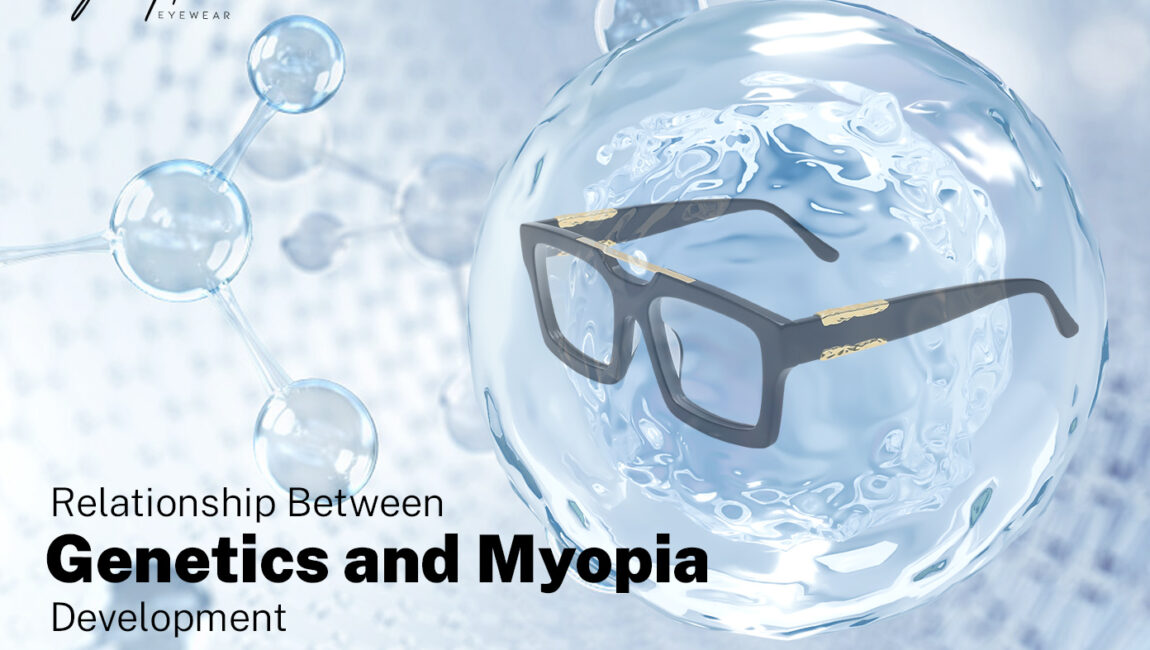Introduction:
Myopia, commonly referred to as nearsightedness, is a widespread visual impairment that impacts a significant portion of the global population. Individuals with near sight experience difficulty in seeing distant objects clearly while maintaining clear vision of objects up close. Over the years, there has been a surge in research interest regarding the role of genetics in the onset and progression of near sight. This blog aims to delve into the intricate relationship between genetics and myopia, delving into the most recent research findings and their potential implications.
Understanding Myopia:
Myopia is a complex condition influenced by various factors, including both environmental and genetic components. It typically emerges during childhood or adolescence and can progress over time. While environmental factors such as excessive near work and prolonged screen time have been identified as potential contributors, the impact of genetics on myopia development has gained significant attention.
Genetic Factors and Myopia:
Numerous studies have revealed a strong genetic component in myopia, with heritability estimates ranging from 50% to 90%. Family and twin studies consistently demonstrate a higher prevalence of myopia among individuals with affected relatives, indicating that genetic factors play a crucial role in determining an individual’s susceptibility to near sight.
Genome-Wide Association Studies (GWAS):
Advancements in genetic research have paved the way for identifying specific genetic variants associated with near sight susceptibility. Genome-wide association studies (GWAS) have been conducted to investigate these genetic markers. By analyzing the genetic profiles of thousands of individuals with and without myopia, researchers have discovered several genes potentially linked to near sight development. These genes actively participate in various biological processes, such as eye development, scleral remodeling, and neurotransmitter signaling.
Gene-Environment Interactions:
While genetic factors significantly contribute to short sight development, it is important to acknowledge their interaction with environmental factors. For instance, spending excessive time engaged in near work activities, such as reading or using digital devices, can exacerbate myopia progression in genetically susceptible individuals. Understanding the interplay between genetic and environmental factors is crucial for devising effective strategies for near sight prevention and management.
Future Implications:
The identification of genetic markers associated with myopia provides promising prospects for early detection, risk assessment, and personalized interventions. Genetic testing, combined with environmental modifications, may enable healthcare professionals to identify individuals at high risk for short sight and implement targeted interventions to prevent or slow down its progression.
Additionally, gaining a deeper understanding of the genetic mechanisms behind near sight may pave the way for innovative treatment options. Scientists are actively exploring potential gene therapies and pharmacological interventions that specifically target the genetic pathways associated with myopia development. These groundbreaking approaches hold the potential to revolutionize myopia management, significantly reducing its impact on individuals’ vision and overall quality of life.

Conclusion:
The investigation of the relationship between genetics and myopia development is an intriguing area of research that continues to evolve. The mounting evidence highlighting the significant role of genetic factors in short sight susceptibility opens up exciting possibilities for early detection, personalized interventions, and novel treatments. By further exploring the intricate interactions between genetics and environmental factors, we can hope to address the increasing prevalence of myopia and improve the vision health of individuals worldwide.




